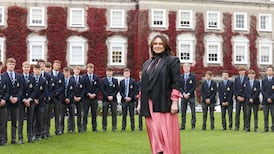The idea that the IRA launched a planned attack on paratroopers was not put to the most senior admitted Provo in Derry on Bloody Sunday, writes Eamon McCann
One of the most significant aspects of the questioning of Martin McGuinness at the Bloody Sunday Inquiry was that at no point was the allegation put directly to him that the IRA launched a planned attack on paratroopers as they entered the Bogside on the day.
In theory, it will still be open to lawyers for the paratroopers to make this suggestion in final submissions next year. But the fact that it was not put to the most senior admitted member of the Provisional IRA in Derry at the time to give evidence will significantly detract from its weight.
Edwin Glasgow QC, for a majority of the soldiers, appeared yesterday to offer a variation on the planned attack theory, which has been canvassed on behalf of the soldiers at the inquiry and over previous years, when he asked McGuinness whether IRA guns had been removed from the Bogside on the morning of Bloody Sunday, "in order to guard against the possibility of inexperienced young hot-heads opening fire."
Glasgow explained that "I have to invite you to comment on these things, otherwise I must not comment on them after you have gone." The comment was somewhat removed from the suggestion of a deliberate assault on the soldiers by the IRA.
One difficulty the soldiers' representatives have is that little evidence has emerged over 391 days of oral hearings to sustain their case, outlined by Glasgow in his opening statement in December 2000, that while it may be that none of the acknowledged dead and wounded were armed, IRA gunmen and bombers were among a possible 34 "unidentified casualties" of the shooting. "We do positively make (the) assertion ... that gunmen and bombers were killed on Bloody Sunday," he declared then. The theory is that the bodies were spirited away and secretly buried.
McGuinness yesterday was not the first witness openly to deride this suggestion. If any such thing had occurred, he told Gerard Elias QC, for a number of soldiers and Westminster civil servants, "it would have been such a debating point within the city it could not have been covered over."
The one case Elias was able to cite in attempted refutation was that of Michael Doherty, a member of the Official IRA who, after his death earlier this year, was acknowledged by the Officials to have been wounded in an exchange of fire with British soldiers in the Long Tower area some time after the Bogside shooting.
Why had McGuinness not mentioned Doherty when making his statement to the inquiry in which he denied that any IRA member had been killed or wounded on the day? Might he not also now be covering up other IRA casualties? "You are obviously trying to get away from the main contention that the soldiers have made over the last 30 years," McGuinness shot back, adding, "Mickey Doherty, in my opinion, was not a member of the IRA."
Lord Saville's tribunal may make harsh comment on McGuinness's refusal, on ground of a "duty of honour", to name members of the IRA who have not named themselves in statements or to identify the location of an arms dump in the Bogside in 1972, but little emerged from the Sinn Féin man's two days on the witness stand which seems likely to be of use in making a case for an IRA role in precipitating the shooting.
Moreover, publicity surrounding McGuinness's appearance, focusing on allegations against him, may have obscured the fact that even if the allegations were better supported by evidence, they would contribute little to an understanding of why Bloody Sunday happened.
Potentially, the most damaging allegation highlighted over the past two days is that he may have fired the first shot on the day, from a Thompson submachine gun at the Rossville Street flats. The evidence for this comes from a MI5 agent, "Officer B", who told the tribunal in London last May that in 1984 he conducted a taped "debrief" of an agent code-named "Infliction" in which Infliction claimed to have heard McGuinness making this admission. (Infliction will not testify, following a ruling that to call him would put his life at risk.)
However, while the first paratroop firing within the Bogside did happen in or near the Rossville Flats carpark, none of the soldiers who opened fire there, killing 17-year-old Jackie Duddy and wounding a number of others, claimed in evidence to have been aiming at or returning the fire of a man with a Thompson. Even if the allegation is true, it doesn't explain the killing and wounding.
Similarly, the suggestion during evidence in London last month by Paddy Ward - he claims to have been the commander of the Fianna, the "junior IRA", in Derry on Bloody Sunday - that McGuinness helped distribute nail-bombs to Fianna members some hours before the Bloody Sunday march, may have made for huge headlines and would be deeply damaging to McGuinness if true, but has little apparent relevance to the way events developed. The overwhelming evidence from all sources is that no nail-bombs were used on the day.
No previous witness to the tribunal, including high political, military and civil service officials, has attracted the degree of media interest directed towards McGuinness this week. But it may turn out that his evidence has helped little towards an explanation of the event the tribunal is investigating, apart from weakening a central plank of the case being made for the paratroopers.








